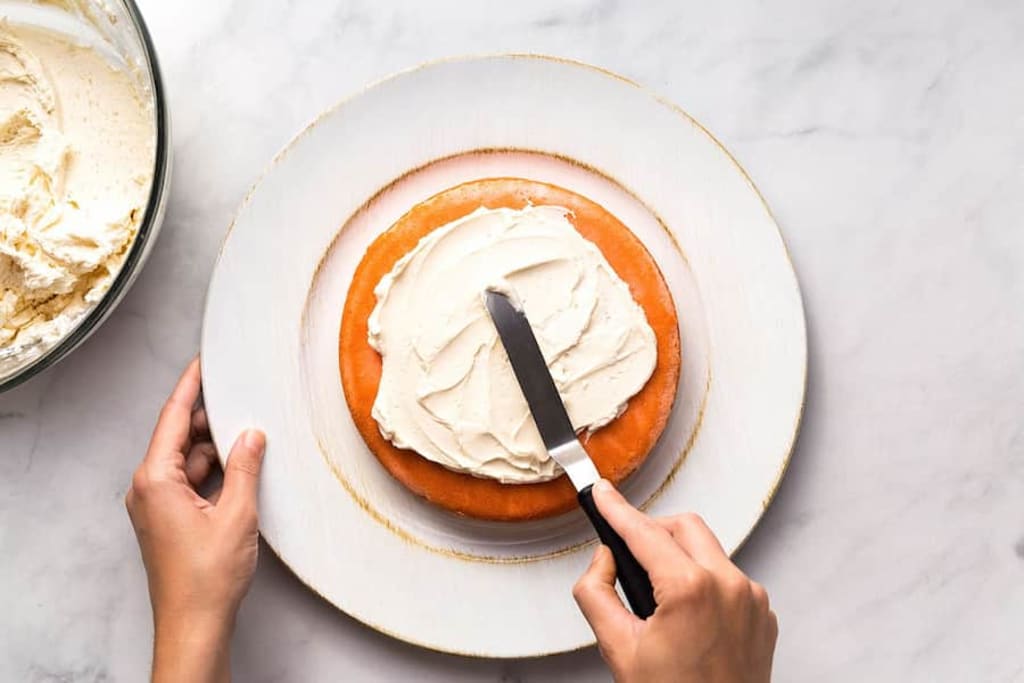How to Prevent Cake Doming
Tips to Prevent Cake Doming

Have you ever baked a cake that looked more like a volcano than a dessert? If so, you’re not alone. Many bakers struggle with the problem of cake doming, which is when the center of the cake rises higher than the edges, creating an uneven surface and a cracked top.
Cake doming can ruin the appearance and texture of your cake, especially if you want to make a layer cake or decorate it with frosting. Fortunately, there are some simple tips that can help you prevent cake doming and achieve a flat, smooth, and delicious cake every time.
What Causes Cake Doming?
Cake doming is caused by uneven baking, which means that the edges of the cake bake faster than the center. This creates a temperature difference between the inside and outside of the cake, which makes the batter expand and rise more in the middle.
There are several factors that can contribute to uneven baking, such as:
Oven temperature: If your oven is too hot, the cake will bake too quickly and form a crust on the edges, while the center will remain raw and puffy. On the other hand, if your oven is too cold, the cake will take too long to bake and dry out, resulting in a dense and tough cake.
Pan size: If your pan is too small for the amount of batter, the cake will have no room to spread and rise evenly, and will overflow and dome in the center. Conversely, if your pan is too large, the cake will be too thin and overbake, losing its moisture and flavor.
Pan material: The type of pan you use can also affect how your cake bakes. Dark metal pans tend to absorb and conduct more heat, which can cause the edges of the cake to brown and harden faster than the center. Glass or ceramic pans, on the other hand, reflect and insulate heat, which can slow down the baking process and make the cake more moist and tender.
Batter consistency: The thickness and composition of your batter can also influence how your cake rises and bakes. A thin and runny batter will spread more easily and bake more evenly, while a thick and heavy batter will resist spreading and bake more slowly, creating a dome. Additionally, the amount of leavening agents (such as baking powder or baking soda) and liquids (such as milk or water) in your batter can affect how much your cake rises and domes.
Cake Recipes to Try
How to Prevent Cake Doming
Now that you know what causes cake doming, here are some tips on how to prevent it and bake a flat and perfect cake every time:
Lower the oven temperature: One of the easiest and most effective ways to prevent cake doming is to lower the oven temperature by 25°F (14°C) and increase the baking time accordingly. This will allow the cake to bake more slowly and evenly, without forming a crust on the edges or a dome in the center. To check the accuracy of your oven temperature, you can use an oven thermometer and adjust it as needed.
Use the correct pan size: Another important tip is to use the pan size that is recommended by the recipe, or adjust the amount of batter accordingly. A general rule of thumb is to fill the pan no more than two-thirds full, leaving enough space for the cake to rise and spread evenly. You can also use a kitchen scale to measure the batter and divide it equally among the pans, if you are making a layer cake.
Use baking strips: Baking strips are strips of fabric that are soaked in water and wrapped around the outside of the cake pan before baking. They help to insulate the edges of the cake and keep them from baking faster than the center, resulting in a flat and even cake. You can buy ready-made baking strips, or make your own by cutting strips of old towels or cotton fabric and soaking them in water.
Use a heating core: A heating core is a metal or ceramic cone that is placed in the center of the cake pan before baking. It helps to distribute the heat evenly throughout the cake, preventing the center from rising and doming. Heating cores are especially useful for large or deep cakes, such as bundt cakes or pound cakes. You can buy heating cores online or at baking supply stores, or improvise with a metal flower nail or a metal cookie cutter.
How to Fix a Domed Cake
If you still end up with a domed cake, don’t worry. There are some easy ways to fix it and make it look flat and beautiful. Here are some options:
Trim the dome: The simplest way to fix a domed cake is to trim the excess cake with a serrated knife or a cake leveler. You can do this while the cake is still warm, or after it has cooled completely. Just place the cake on a cutting board and slice off the dome, following the curve of the cake. You can use the trimmed cake pieces to make cake pops, truffles, or crumbs for decoration.
Invert the cake: Another way to fix a domed cake is to invert it onto a cake board or a plate, so that the flat bottom faces up. This works best for single-layer cakes or the top layer of a layer cake. You can do this while the cake is still warm, or after it has cooled completely. Just flip the cake over and peel off the parchment paper, if you used any. You can then frost and decorate the cake as usual.
Use the dome: A third way to fix a domed cake is to use the dome to your advantage and create a design that incorporates it. For example, you can make a dome-shaped cake into a hill, a mountain, a volcano, a planet, or a hat, depending on the theme of your cake. You can also fill the dome with frosting, ganache, whipped cream, or fruit, and create a surprise filling inside the cake.
FAQs
What is the best way to measure the temperature of my oven?
The best way to measure the temperature of your oven is to use an oven thermometer, which is a device that shows the actual temperature inside the oven. You can place it on the middle rack of the oven and check it periodically to see if it matches the temperature you set. If not, you can adjust the oven knob or dial accordingly. An oven thermometer can help you avoid overbaking or underbaking your cake, as well as prevent cake doming.
How do I know when my cake is done?
There are a few ways to test if your cake is done, such as:
- Inserting a toothpick or a skewer into the center of the cake. If it comes out clean or with a few moist crumbs, the cake is done. If it comes out wet or with batter, the cake needs more time.
- Gently pressing the top of the cake with your finger. If the cake springs back, it is done. If it leaves an indentation, it is not done.
- Looking at the color and texture of the cake. The cake should be golden brown and slightly pulled away from the sides of the pan. The cake should not be pale, cracked, or sunken.
Final Words
Cake doming is a common problem that many bakers face, but it can be easily prevented or fixed with some simple tips and tricks. By lowering the oven temperature, using the correct pan size, using baking strips or heating cores, and trimming or inverting the cake, you can achieve a flat and even cake that is ready for frosting and decorating. With these tips, you can bake a perfect cake every time.
About the Creator
Enjoyed the story? Support the Creator.
Subscribe for free to receive all their stories in your feed. You could also pledge your support or give them a one-off tip, letting them know you appreciate their work.





Comments
There are no comments for this story
Be the first to respond and start the conversation.